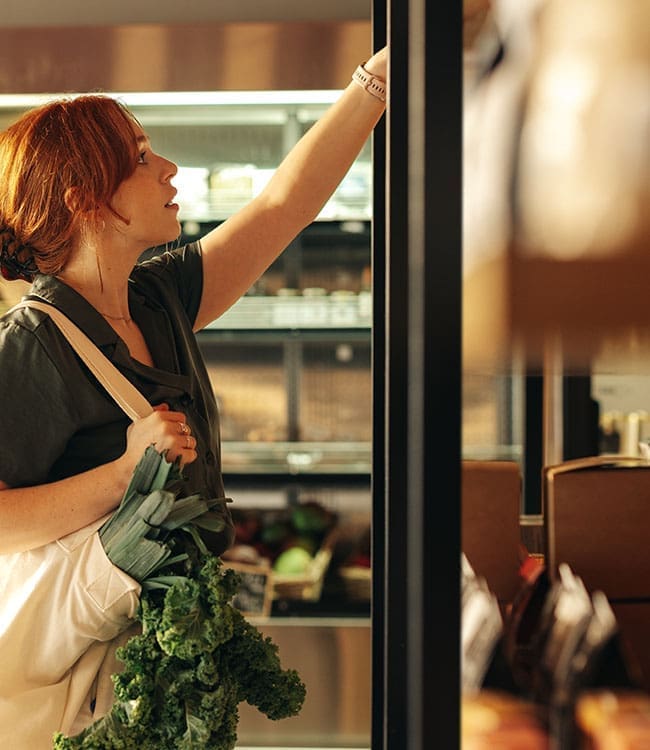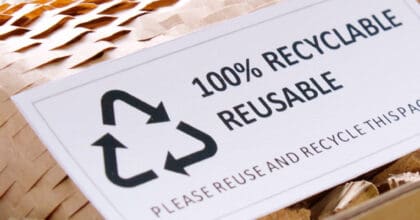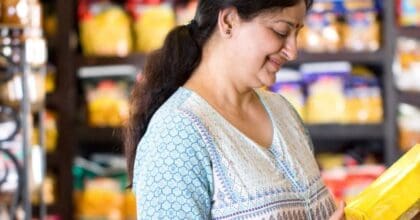Although some three-quarters of Indian consumers (75%) recognise the importance of protecting the environment, this doesn’t always reflect in their actions. Only a small handful of consumers (15%) regularly recycle waste or buy products with sustainability claims according to Mintel research.
This disconnect between consumer attitudes towards sustainability and their actual behaviours can be attributed to several factors, including lack of convenience and trust, affordability and accessibility.
While eco-friendly packaging is something that consumers are willing to opt for when making food and drink purchases, Mintel research indicates that they will look for convenience and affordability first. It is important for brands to emphasise cost-effectiveness, convenience and lead with features that consumers value while promoting eco-friendly packaging as an added benefit. For Indian consumers, when they purchase food and drink products, health benefits and natural ingredients are top indicators of value, and take preference over a product’s environment-friendliness.
The overall low engagement for products with sustainability claims reflects the reality that shoppers are likely to consider factors such as taste, healthfulness and brand name to be more important. Even so, a third of consumers are willing to pay a premium for food products with eco-friendly packaging. This means eco-engaged consumers are willing to invest their money in products with eco-friendly packaging. Younger women aged 18-34 – especially those working full-time – are more likely than others to be part of this eco-engaged cohort.
But what exactly is eco-friendly packaging for Indian consumers?
When brands talk about environment-friendliness, they mostly talk about recyclable packaging. In the last five years, data from Mintel Global New Products Database shows that environmentally friendly package claims in Indian food and drink launches grew by 60%; over 90% of these launches talk about packaging that can be recycled.
However, the lack of recycling infrastructure and clear directions for consumers on how to go about recycling can make these recyclable packaging claims unengaging for consumers. Mintel research indicates that 36% of Indians consider non-plastic packaging to be the most eco-friendly option, well above recyclable packaging (27%) and plastic made with less plastic (28%). One of the reasons for this is the constant vilification of plastics in the media.
Despite ongoing scrutiny, plastic packaging’s inherent capabilities in food preservation and shelf-life extension, vital for reducing food waste, will ensure its continued use. In the next few years, the packaging industry’s focus will likely home in on further enhancing plastic’s sustainability and recyclability.
Mintel advises ‘responsible’ use of plastics is a more practical and economical solution. Responsible packaging can help marketers respond to customer concerns by reducing packaging and improving environment-friendliness.
David Luttenberger, Mintel Global Packaging Director, also stresses the importance of not neglecting plastic packaging simply for the material that it is. “Though consumers expect brands to eliminate or reduce plastic, when it is used, an explanation of why it is the more appropriate material/format for this occasion, this region, or this point in time is paramount,” says Luttenberger. He also suggests that aiming for a single-use plastic-free world might be unrealistic, instead a plastic-responsible world is a more practical, economical, and ultimately more probable, if not more popular.
Companies like The Disposal Company, claimed to be India’s first plastic credit platform, seeks to streamline climate action for brands and consumers. Some Indian brands have started featuring the neutral logo from The Disposal Company on their packages, signifying responsible collection and recycling of the plastic used. Simultaneously, other brands have transitioned to alternative materials like paper, in a bid to become plastic-free.
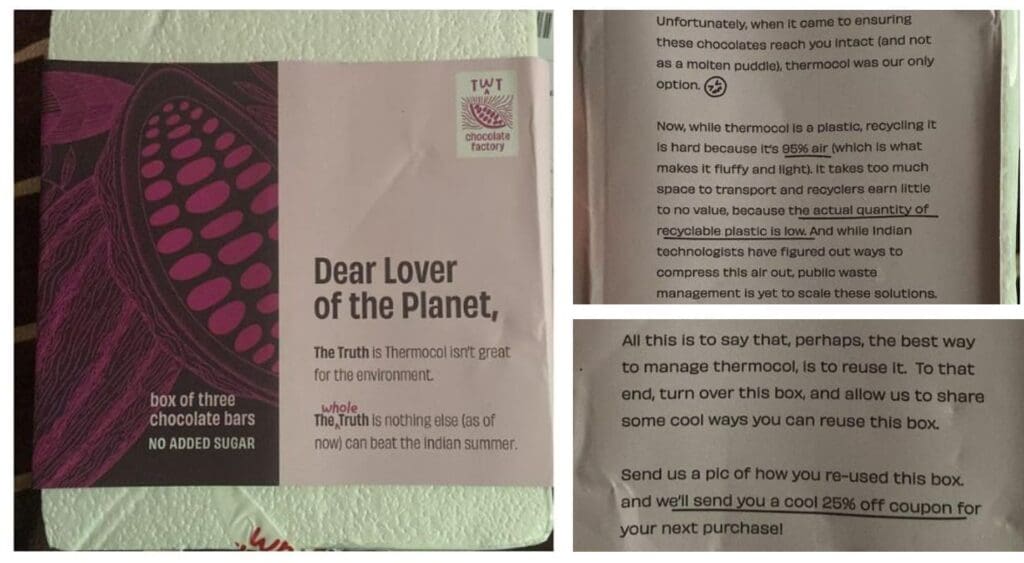
Being responsible: The Whole Truth explains why the use of Thermocol is essential for shipping its chocolate bars
Focus on minimising the use of plastic
Our throwaway culture not only wastes a great deal of energy and natural resources, but also causes severe pollution to the environment. Consumers want packaging to deliver convenience and plastics is often the material of choice thanks to its versatile material properties. However, consumers will also no longer accept ‘excess’ packaging, with a growing clamour for brands to use less. The brands that will win in this space are those that use plastic responsibly, for example by working towards plastic packaging that fits a circular economy model.
A circular economy is underpinned by a transition to renewable energy sources. It is also based on three principles:
- Designing out waste and pollution
- Keeping products and materials in use
- Regenerating natural systems
It is imperative to understand that a circular economy model is not synonymous with ‘banning’ or ‘replacing’ certain materials, such as plastic. Rather, it focuses on designing out waste, optimising resources and preventing activities that are harmful to the environment.
For starters, brands can evaluate their packaging portfolio to ensure that plastic is used responsibly. This may require the removal of longstanding packaging elements such as trays, overcaps, or a simple redesign to enable lighter weight. Using less packaging is far more effective to curb the urgent situation of packaging waste pollution. Shifting brand and consumer approaches away from the current ‘take-make-waste’ linear model to a circular one is crucial.
Consequently, it’s essential for brands to understand consumer expectations from packaging and identify sustainable features that resonate with them. Regardless of the material type, reducing packaging can significantly lower environmental impact.
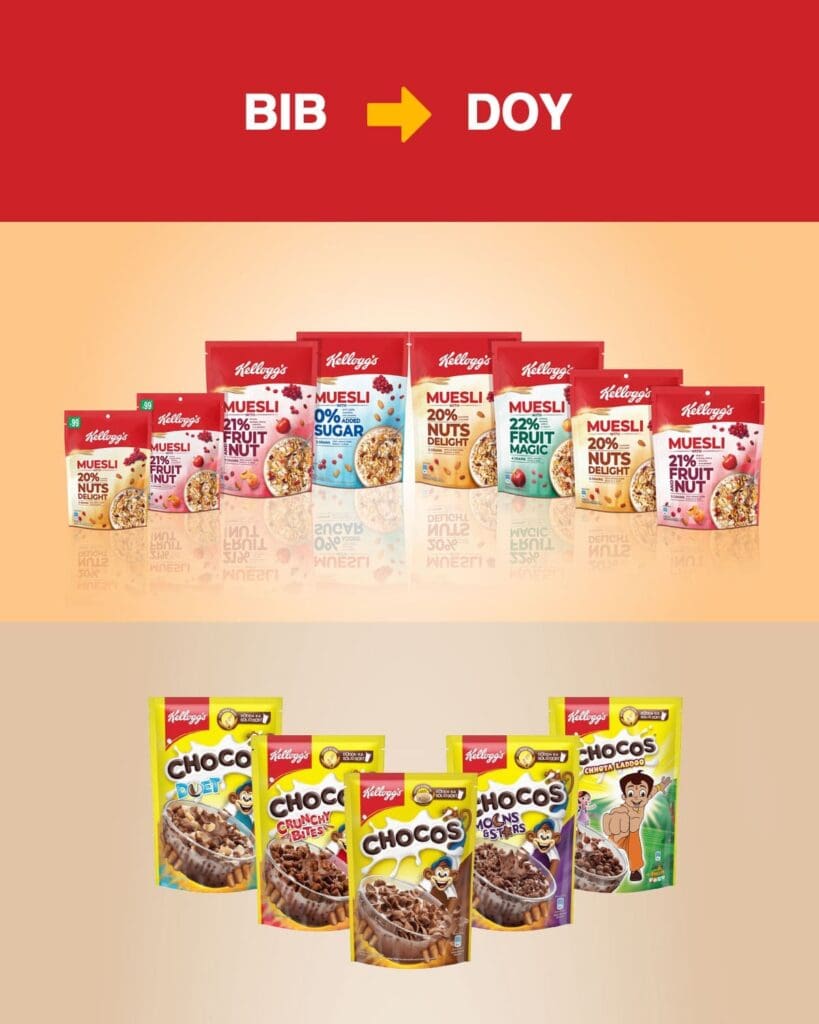
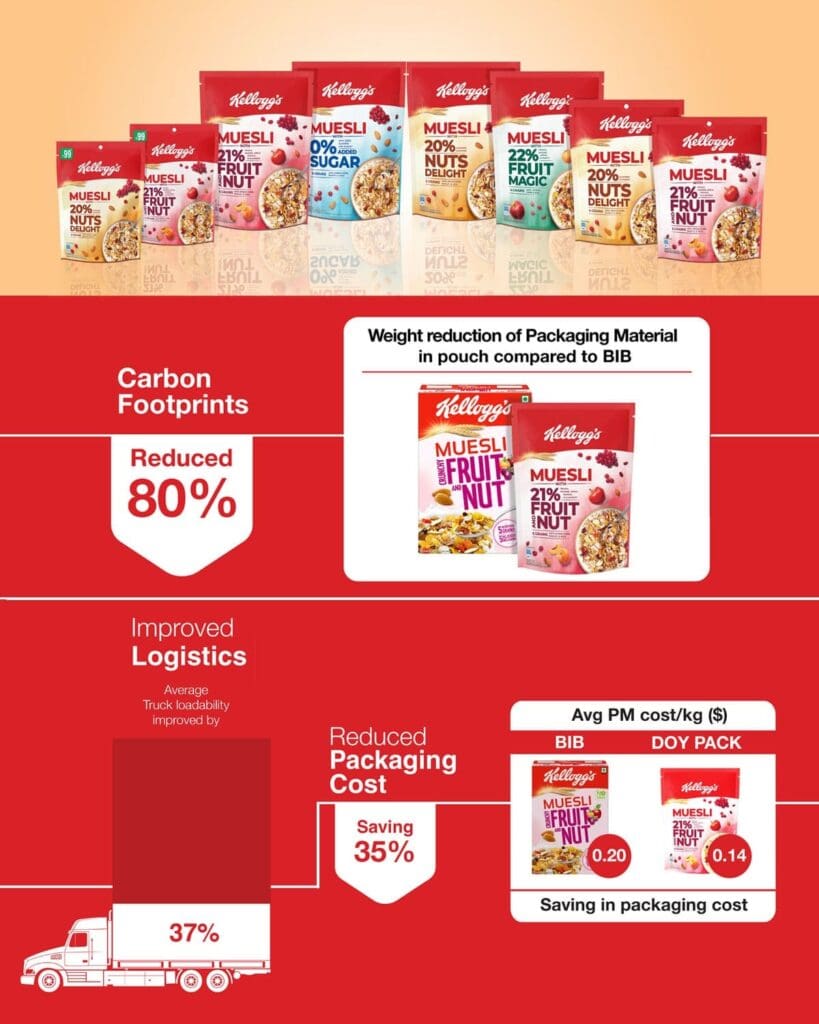
Educate consumers: Irrespective of material type, the reduction of the packaging material can reduce environmental impact. Kellogg’s bag-in-box to doypack transition claims to have reduced carbon footprint by 80%. (Source: WorldStar Global Packaging Awards)
This article originally appeared on WhatPackaging? magazine. This is the first in a two-part series wherein our Mintel expert, Rushikesh Aravkar, explores the evolving trends in food packaging and examines how Indian consumers perceive eco-friendly packaging and their preferences for sustainable features.



















